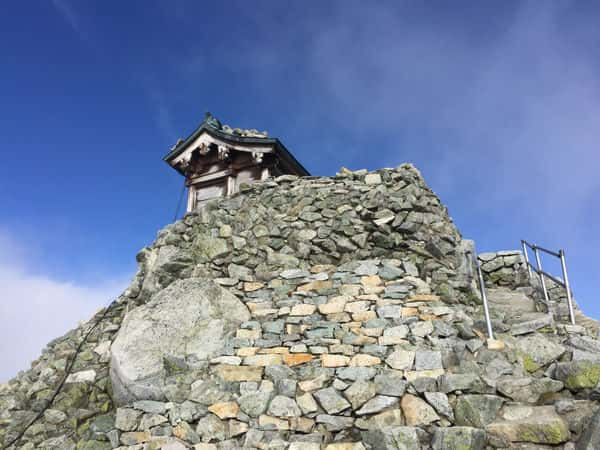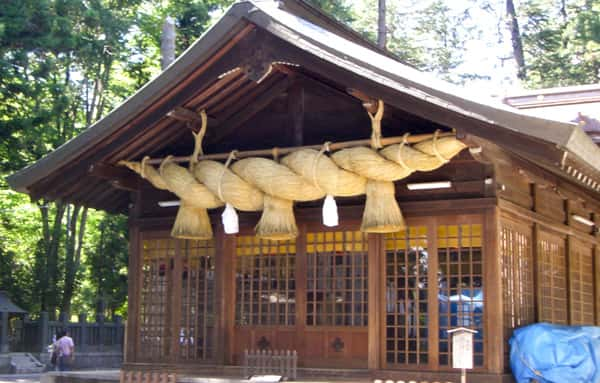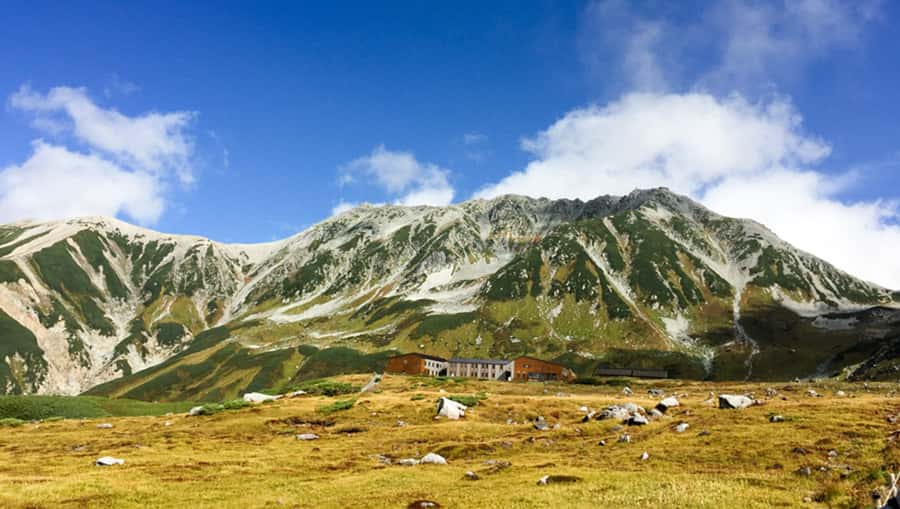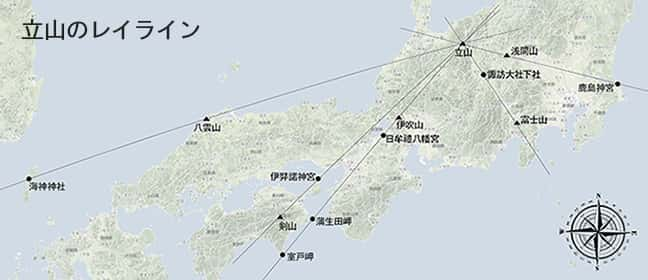Reihou Tateyama
Mt. Tateyama is the highest mountain in Toyama Prefecture, rising 3,015 meters above sea level in the Hida Mountains of the Northern Alps, and is the highest mountain in the four prefectures of the Hokuriku region. Tateyama is the collective name for the three peaks of Oyama, Onanjiyama, and the Fujino-oritate, which can be seen from afar as a single flat, vast mountain, making it an incomparably beautiful landmark that leaves a lasting impression on all who see it. Jigokudani (Hell Valley) is known as the highest place for a sulfur spring in Japan, which flows out to the area around Murodoudaira. Located at the foot of Tateyama is a composite volcano. Coexisting with the hot springs, Tateyama was also the first place in Japan where an existing glacier was discovered.
The Reizan where the Tateyama Religion Flourished
Tateyama has been revered as a sacred mountain since ancient times and has cultivated the Tateyama faith. The Sea of Japan can be seen from its summit. This means that from the sea, one can also see the top of Tateyama. Ancient travelers who traveled by boat on the Sea of Japan in search of the high mountains where the gods descended could easily recognize the existence of Tateyama. On a clear day, one can also see Mt. Fuji from the top of the mountain. It must have been recognized as a reizan at some point. Thus, at the beginning of the 8th century, Jiko Shonin officially opened Tateyama.
Tateyama Oyama Shrine and Shugendo

Mine Headquarters of Echigoku
Ichinomiya Oyama Shrine
at the summit of TateyamaTateyama Shrine was built on the mountain itself and was called Tateyama Gongen back in ancient times. Its deities are Izanagi and Amenotajikara‐onokami, and the date of its founding is unknown. Since the deity is Izanagi, the founder of the national birth, it is undeniable that Izanagi himself may have discovered Tateyama from the Sea of Japan during the time of the birth of Japan and enshrined the deity there. The basis of Tateyama worship is Shugendo, and temples have been built at the foot of the mountain to serve as bases for religious ascents. It was believed that by climbing Tateyama and making pilgrimages to the mountain, one could someday experience a simulation of the afterlife.
Ley lines of Tateyama
If Tateyama is an ancient sacred mountain, not only should its peak be visible in the distance from the sea, but the ley line connecting Tateyama to other sacred sites should be lined with mountains mentioned in the Kojiki and in shrines with long historical significance. An examination of the ley line of Tateyama reveals that it can be assumed that these ancient sacred sites were in alignment along the ley lines.
First, it is noteworthy that Tateyama is located on the line connecting Izanagi Shrine on Awaji Island, where Izanagi, the founder of the nation, is said to have been buried, and Tsurugisan is the highest peak visible from Awaji Island. Tsurugisan was first discovered by Izanagi during the creation of Japan. Tateyama is the mountain that connects Tsurugisan to Izanagi Shrine and can be thought of as a reizan.
Mt. Yakumo, Tsurugisan, and Mt. Ibuki on the Tateyama Ley Line

Suwa-taisha Shimosha AkinomiyaIt is important to note that Tateyama is located on the ley line connecting Yakumoyama, which is said to be the sacred body of Izumo Grand Shrine, is the setting of the Shindai period, and the Kaijin Shrine on Tsushima Island, which is intertwined with the legend of Yamasachihiko and Umisachihiko. As a mountain connected to the birth of Japan, Tateyama itself may have been recognized as a reizan that shares the power of the earth, and may have been used as a landmark when identifying the sacred sites of the Izumo Grand Shrine and the Kaijin Shrine.
The Suwa Grand Shrine Lower Shrine, which was built in Suwa and is associated with the legend of Takemikazuchi, the god of war, from Izumo to Suwa, forms a ley line with the summit of Mt. Fuji. The ley lines that connect Tateyama to the ancient reizan of Mt. Fuji, Yakumo (Izumo Grand Shrine), Tsurugisan, and Mt. Ibuki can still be seen on maps today. Tateyama’s connection to these famous mountains has a spiritual nature that is unshakeable.


